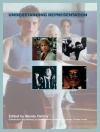Chinese martial arts cinema is held to be a synthesis drawing on artistic conventions of traditional Chinese theatre. Film sound and music perform as the legitimate heirs of some of the aesthetic ideas and norms of traditional Chinese theatre. This book critically examines the history of this under-explored field of inquiry from a theoretically comparative perspective, demonstrating that the musical codes drawn from traditional theatre are a constantly changing component integral to Chinese martial arts cinema. It explores the interaction between traditional Chinese theatre and Chinese martial arts cinema in how the musical codes of the former have shaped the aesthetics of the latter uniquely. This departs from conventional existing studies that focus on “adaptation.” The book’s historical and theoretical approach connects film, theatre and music, and re-defines the status of distinctive domains of filmic expression, grounding theatre as the pivot – or “hinge” – of film aesthetics. Thebook proffers this unique angle of research to rethink and re-imagine film sound and audiovisual synchronisation. Primarily intended for scholars in Chinese cinema, film music, Chinese theatre and visual culture, this monograph also presents introductory and comprehensive material for undergraduate and graduate-level courses in film and media studies, film music, Chinese cinema, and Chinese theatre.
Cuprins
Introduction.- Chapter 1: Musicking The Chinese Martial Arts Cinema.- Chapter 2: Hearing the Theatre Through Four Moods.- Chapter 3: The Politics of Bodily Rhythm in Raining in the Mountain.- Chapter 4: The Drum Beat and its Diegetic Contextualization in Red Cliff II.- Chapter 5: Music and Slow Motion in the Banquet.- Chapter 6: Conclusion.
Despre autor
Dr. Shuang Wang is Lecturer at the University of Hong Kong (HKU). She received her Ph D in musicology from HKU in 2015. Her research is interdisciplinary, including film music, Chinese musical culture, and Chinese theatre. Dr. Shuang Wang was awarded the HKU Teaching Innovation Award in 2020. She is also active in Hong Kong and mainland China as a guzheng (Chinese zither) performer.












